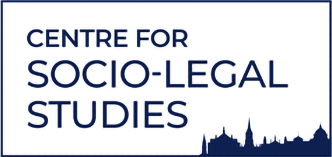
Today I’m brown, tomorrow I’m black: Is it time to revisit how we construct demographic data about ethnicity?

Socio-legal scholars frequently rely on demographic data to produce credible sampling frames and give legitimacy to their research by claiming that their research participants are representative of a larger group. Being able to chart the characteristics of a population also allows us to produce more nuanced accounts of social injustice and who is most affected by it. The sort of demographic data we routinely make reference to includes information about age, class, ethnicity, religion, educational attainment, gender and economic status. Indeed, it could be said that these variables are wired into the DNA of sociological method. Using ‘ethnicity’ as an example, this blog asks whether the time is ripe for a major re-think of how we approach the categorisation of people into these conventional groups.
The fact that government statistics departments across the world use different categories and sub-categories to capture the details of ethnicity reminds us that these data are socially constructed, depending as they do on historical, political, cultural, and social context, not least of which is the history of colonisation. In the UK, there has been an ethnicity question in the national census since 1991 and significantly, the list of pre-coded categories have been updated at every new Census since then.
Naming can be a powerful tool. An Irish woman I once interviewed told me that in the UK, there has historically been a reluctance to have an ‘Irish’ category in the UK census because of a prevailing political discourse which saw ethnic minorities as a problem. In other instances, individuals might have a range of difference categories imposed on them. An Argentinian friend told me that since moving to the global North she has been referred to as Hispanic because she speaks Spanish or as a Latina because she comes from South America. Neither of these terms were chosen by her; she prefers the gender neutral Latinx.
The word ‘ethnicity’ is far from having a common definition and has a complex relationship with race, religion, nationality, heritage, geographical region, religious group and culture. The Oxford English dictionary defines it as “Status in respect of membership of a group regarded as ultimately of common descent, or having a common national or cultural tradition; ethnic character.” Elsewhere it has been defined as “A term that refers to the social and cultural characteristics, backgrounds, or experiences shared by a group of people. These include language, religion, beliefs, values, and behaviors that are often handed down from one generation to the next” or more simply as: “essentially self-defined and may change over time”. Frequently left out of these definitions is the recognition that many contemporary classifications can be traced to racist preconceptions about biological and cultural differences or ways of naming that are complicit in the production of racist and discriminatory practices.
The list of precodes for the ‘ethnic group’ variable used in the UK National Census 2021 is an interesting case study. The expectation is that those completing the Census form indicate the ethnic group that they feel they belong to, which suggests an element of choice in a categorisation system created by others. Respondents are asked to choose one out of 19 tick-box response categories, including a write-in response option.
Asian, Asian British or Asian Welsh:
Bangladeshi
Chinese
Indian
Pakistani
Other Asian
Black, Black British, Black Welsh, Caribbean or African:
African
Caribbean
Other Black
Mixed or Multiple ethnic groups:
White and Asian
White and Black African
White and Black Caribbean
Other Mixed or Multiple ethnic groups
White:
English, Welsh, Scottish, Northern Irish or British
Irish
Gypsy or Irish Traveller
Roma
Other White
Other ethnic group:
Arab
Other
This question purports to collect data on ‘ethnic identity’ but the categories conflate four related but distinct concepts. Firstly, the list above refers to notions of ethnic origin or place, such as Asia, Bangladesh or the Caribean. Secondly, it alludes to skin colour, defined starkly in terms of a problematic black or white binary. Thirdly, the categories refer to terms we associate with ethnic identity such as Roma or traveller. Finally, the use of ‘English, Welsh, Scottish, Northern Irish or British’ signals a reference to political union, which some of those in the next category of ‘Irish’ might not even recognise. And then there is the concept of ‘other,’ forcing those who use this data in an act of marginalising those the census does not name or recognise.
The expectation is that those completing the census form indicate the ethnic group that they feel they belong to, suggesting a static concept involving an element of choice independent of context, history or biology. One person I interviewed who was from Mumbai once told me that although he would not normally call himself black he might still tick that box in a census as a sign of political solidarity with his Afro-Caribbean or African sisters and brothers who had joined him in campaigns for racial equality. This makes clear that people can have multiple ethnic identities depending on the circumstances in ways ignored by the requirement to tick just one category. Time for change?

